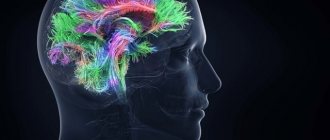Fear has a special meaning in human life.
This feeling can throw one out of balance, disorganizing the life of an individual. Therefore, phobias, born of fear of something, are quite diverse. Among them there is also heliophobia - fear of the sun and sun rays (from the Greek helios - sun and phobos - fear). A small number of people, about 1% of the world's population, are affected by this disease. Adequate therapy allows you to completely get rid of this sinister disorder. When the start of treatment is delayed, serious consequences develop that are dangerous to a person’s health and social activity.
General information
Photophobia of the eyes, or otherwise photophobia, is a painful sensitivity of the organ of vision to light and refers to subjective visual disorders. Contact with even the slightest rays can cause quite unpleasant sensations in a person, including pain and discomfort in the eyes, spasm of the eyelids, severe lacrimation, resulting in an urgent need to squint the eyes.
The cause of photophobia usually lies in various eye diseases, but it can also be caused by measles , rubella , meningitis , encephalitis , epilepsy , pathologies of the cornea and conjunctiva, which could be caused by erosive processes and superficial inflammation. In addition, there is a possibility of developing photophobia when using eye drops to dilate the pupils.
The most famous people with photophobia were Hannelore Kohl, Lyubov Orlova, Anna Wintour.
Prevention
To prevent photophobia, follow these preventive measures:
- Selection of glasses or lenses by a specialist.
- Maintain visual hygiene: hydration, rest, removal of contaminants.
- Work at the computer or with documents intermittently.
- Sufficient lighting.
- Eye protection from ultraviolet radiation (glasses, wide-brimmed hats).
- Timely consultation with a doctor at the first alarming signs.
- Use of computer special glasses.
Photophobia is a symptom of many disorders. But this condition can be eliminated if the causes are identified in a timely manner, consult an ophthalmologist and follow his recommendations.
Pathogenesis
Hypersensitivity to any kind of light rays - natural or artificial - is usually a sign of disorders in the visual analyzer or nervous system - when the eye cannot perform its functions or the scheme of transmitting and processing information in the brain is disrupted. When a large amount of light hits the retina, neuroregulation must “give a command” that helps reduce contact with light so that the retina is not damaged, for example, narrow the pupil, close the eyelid, or an unconditioned reflex - involuntarily squint. If there are diseases or injuries to the organ of vision, the trigeminal nerve, or foreign bodies, then a “specific” negative reaction to light, even of normal intensity, may occur.
Therapy
Heliophobia requires professional help, especially at the initial stage of treatment. Treatment of the disease is carried out on an outpatient basis. Hospitalization is rarely necessary when the situation reaches a critical point.
Treatment of the disorder primarily comes down to the use of psychotherapeutic methods :
- Cognitive behavioral therapy uses the method of immersing the client in a traumatic situation and teaching how to get out of it using rational methods. Immersion, that is, access to the sun, is carried out gradually.
- Psychoanalysis will help reveal the underlying cause of the disorder and get to the bottom of it.
- Hypnosis is considered a particularly effective treatment for phobias. In a short period of time, it allows you to eradicate the problem without much effort for the client. By putting a person into a trance state, the specialist gets the opportunity to work with his unconscious. The hypnotherapist is thus able to influence a person’s ingrained attitudes acquired in childhood, identify traumatic events, change the patient’s attitude towards fear and help form an adequate model of behavior. For the client, this method is considered gentle because it does not cause tension or anxiety, and the treatment process is hidden from the patient’s consciousness. He is given the opportunity only to enjoy the result.
- In the compensated stage of the disease, auto-training and relaxation activities are available for patients.
Drug treatment is used in some cases. For depression, antidepressants are prescribed. To relieve panic attacks, the patient must be prescribed anti-anxiety medications. To relieve emotional stress, sedatives are used.
Most heliophobes take vitamin D to smooth out developing hypovitaminosis or compensate for it with nutrition.
Heliophobia is a mental disorder with a favorable prognosis. Stopped at an early stage, the disease goes away without a trace. The advanced form is dangerous because it causes disturbances in the mental activity of the patient.
Causes of photophobia of the eyes
The origin of photophobia can be of different nature:
- Physiological - photophobia resulting from prolonged exposure to darkness and twilight, too bright lighting, excessive UV irradiation, excessively long daily reading, working at a monitor or studying books; in addition, albinism and light eye colors as a result of translucent iris .
- Pathological - as a consequence of various burns, injuries, eye diseases, or is a symptom of chronic fatigue syndrome , dry eyes , depression , neurasthenia , headache , stroke , abscess and brain tumors , as well as intoxications , pityriasis rosea , rubella , , rabies , influenza , meningitis , epilepsy , manifestations of trigeminal neuralgia , blepharospasm , cataracts, glaucoma , Parkinson's syndrome , adenoviral or allergic conjunctivitis , keratoconus , retinal detachment and keratitis .
- Pharmacological - when using anticholinergic drugs that dilate the pupils, for example, Atropine , Ipratropium , Pirenzepine , as well as sedatives such as barbiturates, benzodiazepines, Haloperidol , the antiepileptic drug Ethosuximide , antidepressants, etc.
A number of factors and changes in the nervous system contribute to the development of excessive sensitivity to light. These include:
- increased sensitivity to loud sounds;
- depletion of nervous system mediators;
- lack of sleep;
- irritability;
- excessive emotional stress and stress;
- chronic fatigue;
- power errors.
Causes of photophobia in children
The state of hypersensitivity to the effects of light rays on the eyes may be transient and functional, or may be associated with other organic pathological processes. It is important to know what diseases photophobia can occur as a manifestation or complication of the disease and contact a pediatrician as soon as possible for their diagnosis and treatment!
Treatment
How to treat photophobia in adults and children? Since photophobia is only a manifestation of some kind of deviation, the underlying disease should be identified and eliminated.
Treatment for intolerance and fear of light may include the following:
- Drug therapy. Medicines are prescribed by a doctor after examination. Antibiotics or antivirals, analgesics and non-steroidal anti-inflammatory drugs (if the eyes are inflamed and painful), topical antibacterial or anti-inflammatory agents in the form of drops may be recommended.
- If fear and intolerance to light are caused by working at a computer, you must wear special computer glasses.
- Discontinuation of drugs that cause intolerance or side effects such as photosensitivity.
- Proper selection of contact lenses can also eliminate photophobia.
- Protecting your eyes from the sun will eliminate the manifestations of fear of light caused by exposure to ultraviolet radiation.
- If photophobia or high photosensitivity is caused by severe pathology or a congenital structural abnormality, surgical intervention may be required.
- Moisturizers (eg, artificial tears) for dry eye syndrome.
When negative factors are eliminated, photosensitivity disappears on its own within a few days or even hours. In other cases, the eyes may hurt and take longer to react to light.
Symptoms
The main symptoms of photophobia include:
- discomfort, pain, itching, sensation of a foreign body, veils and pain in the eyes, forcing you to squint, close your eyes, or there is a constant desire to wear sunglasses or curtain the windows;
- redness of the eyes;
- blurred eyes;
- increased intraocular pressure ;
- tearing and various types of discharge - mucous, purulent, etc.;
- nausea;
- dizziness;
- decreased visual acuity;
- negative emotional reactions and migraines when entering a space where there is bright sunlight, which promotes a closed lifestyle and forces one to avoid open spaces in the future, provoking agoraphobia ;
- increased discomfort in the eyes caused by other diseases.
Hypersensitivity to light rays can be accompanied by other mental disorders - depression, anxiety and other types of disorders .
Photophobia in children
Most often, fear of light becomes an acquired disorder, but there are cases when it is congenital and is observed in children from an early age. For example, the reason for this may be albinism, color blindness, etc.
Photophobia in a child is a rather dangerous condition and can lead to the fact that it will be painful for him to look at the light, so parents need to ensure that their children have less stress, injuries, risk of infection, normalized use of electronic devices, optical instruments, compliance with hygiene standards, if necessary, correct vision correction, eye gymnastics.
Diagnosis
Timely diagnosis of photosensitivity will increase the chances of quickly eliminating the fear of light and prevent the serious consequences of photophobia. For diagnosis, you should consult an ophthalmologist. He looks into the eyes and assesses their external condition, interviews the patient, and then, if necessary, prescribes an in-depth examination.
Photosensitivity may require the following diagnostic procedures:
- ophthalmoscopy to examine the fundus of the eye;
- biomicroscopy – study of the organs of vision with a special microscope with a slit lamp;
- tonometry - checking intraocular pressure;
- pachymetry – measurement of corneal thickness;
- perimetry – setting the boundaries of the real field of view;
- gonioscopy – analysis of the condition and structure of the corners of the eyes;
- Ultrasound of the visual organs;
- angiography – analysis of the integrity of the vessels supplying the organs of vision;
- corneal scraping, culture for viruses and bacteria to identify the causative agent of infection;
- optical tomography to detect structural changes in the retina;
- electroretinography, aimed at assessing the functioning of the retina;
- other research methods: MRI and CT, electroencephalography, Dopplerography, radiography.
Only after identifying the causes of photophobia and determining the factors that cause the eyes to react to light can we begin to eliminate photosensitivity and treat the underlying disease.
Diet for photophobia (photophobia)
Diet for eyes, nutrition to improve vision
- Efficacy: therapeutic effect after 2 months
- Timing: constantly
- Cost of products: 1800-1900 rubles. in Week
Nutrition for vision problems should be balanced and capable of providing the body with proteins, fats, carbohydrates, fluids, vitamins and microelements. Approximately the diet should consist of:
- various vegetables, fruits and dried fruits, berries, juices, compotes and herbal teas;
- meat, eggs, fish and seafood;
- porridge and whole grain baked goods;
- In this case, food is prepared by boiling, baking, using a steam or multicooker, seasoned with high-quality natural oils, sauces, herbs, seeds and nuts.










